If the first thing you do when you wake up in the morning is check your mobile device, you’re not alone.
For many of us, turning off the alarm app on our phones is just the beginning when it comes to mobile engagement throughout the day. From skimming the headlines to checking the weather, to responding to emails, or engaging with social media, mobile devices are an inherent part of many morning routines around the world.
The COVID-19 pandemic further accelerated our dependence on mobile devices, as staying connected from afar became more important than ever.
In the US, for example, average daily time spent on mobile devices increased in 2020. And, that habit stuck: eMarketer forecasts continued growth in average time spent with mobile to four and a half hours per day by 2022. Furthermore, time spent with mobile is encroaching on the total percentage of time spent with media, hitting 35% in 2023.
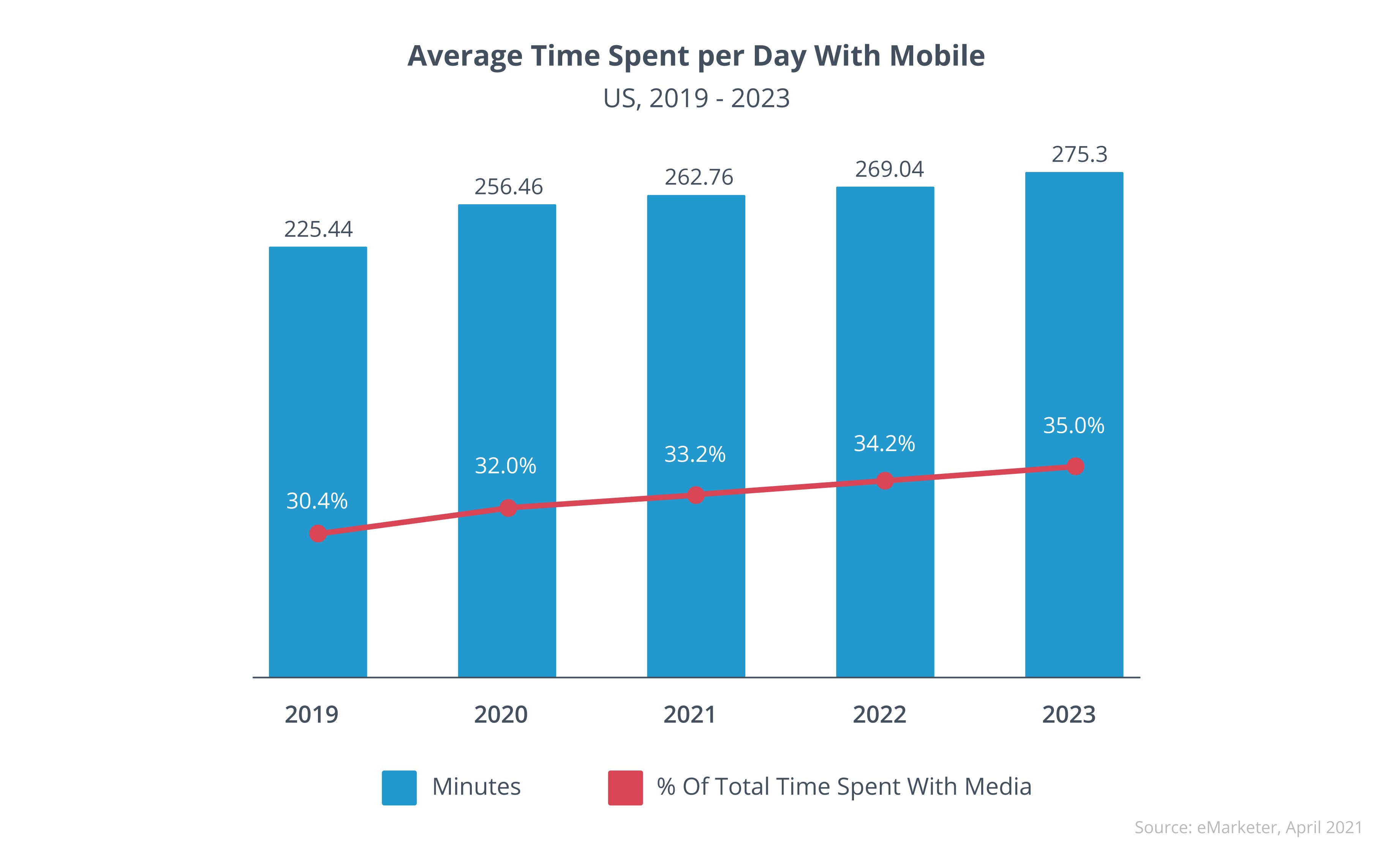
click to enlarge
This trend is not limited to the US, either. Across the board and around the world, users favor spending time with mobile devices over desktop or laptop use:
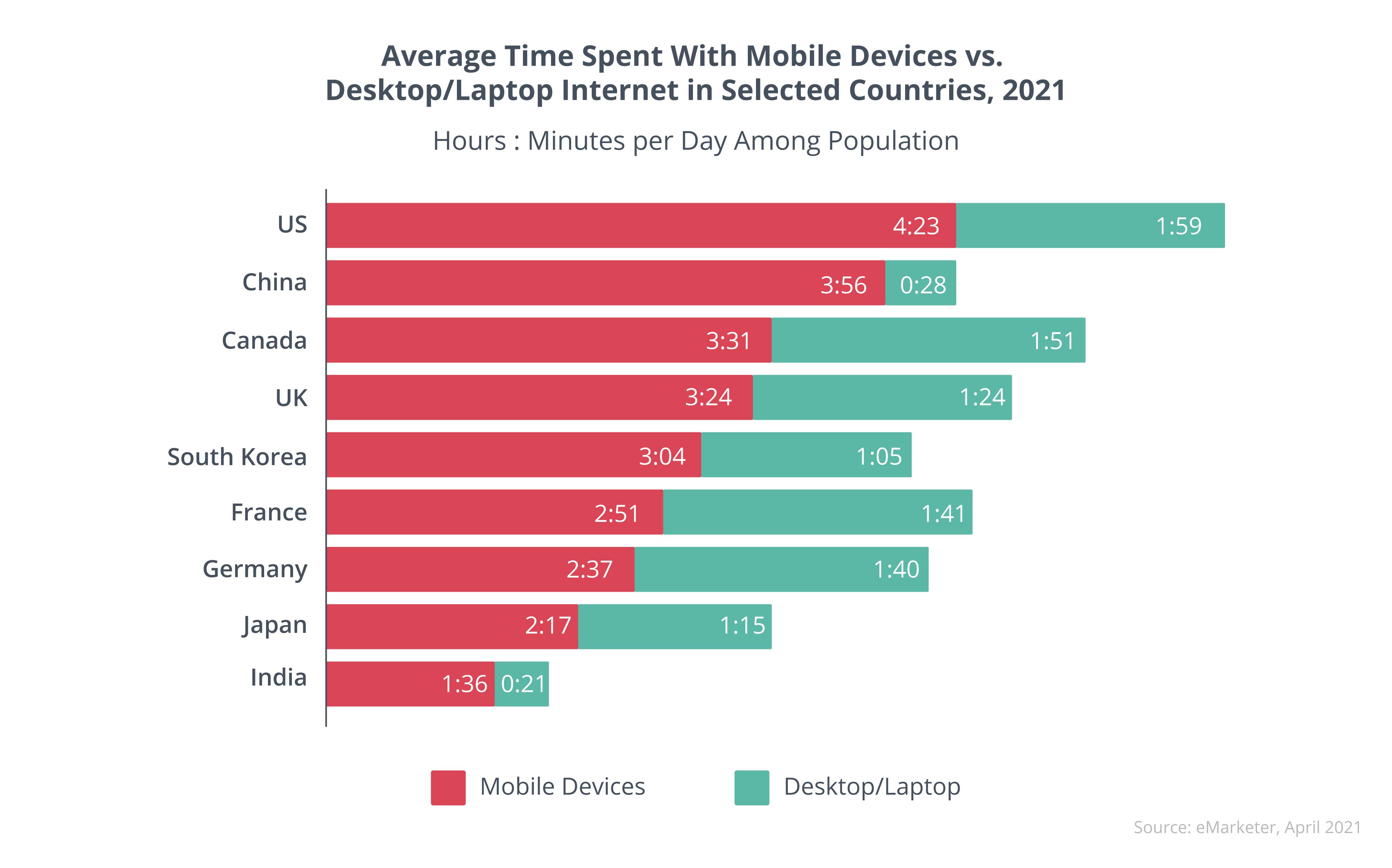
click to enlarge
The Importance of Mobile Advertising
With our reliance on mobile devices, and the growing time we spend with them, it’s no wonder why marketers and advertisers rely on mobile advertising to reach audiences wherever they are.
Both mobile web and mobile in-app advertising can help deliver strong, relevant user experiences while helping advertisers drive revenue and improve brand awareness.
In this article, we explore the differences between mobile web and mobile in app advertising, and the advantages to each.
First, let’s tackle some simple definitions:
What is Mobile Web?
Mobile web is simply browser-based internet access on mobile devices.
Browsing the web on a smartphone or tablet means engaging with mobile web. Just like on desktop, mobile web can involve static imagery, video, rich media, text content, and more. Unlike desktop, mobile web can come with mobile-specific features, like click-to-call and deep linking functionality.
What Are Mobile Apps?
Mobile apps refer to mobile applications. These are software applications designed to run on mobile devices (smartphones and tablets).
Some come pre-installed on a given device, though most apps are selected, downloaded, and installed on devices by users. While many apps require an internet connection to use, others can function offline, too, using pre-downloaded content.
The advantage to mobile advertising is that you are more likely to reach a single user. Unlike desktop computers or TVs which may be shared or communally used, mobile devices tend to be unique to each user. As a result, mobile advertising represents one of the most accurate methods for brands to reach consumers.
So, how do you decide where to run your campaigns?
Why Should Marketers Advertise on Mobile Web?
Less time may be spent on mobile web than in app, but mobile web offers a huge advantage for contextual targeting. Because mobile web is literally the entire internet on the go, the breadth of pages and diversity is unparalleled. This gives advertisers a chance to reach audiences based on their interests across the internet, rather than in a specific app. This also means that mobile web offers a huge opportunity to scale.
Many key ad formats work particularly well on mobile web, too. For example, native ads, which seamlessly blend into their surrounding content, can help deliver a positive, unobtrusive UX that helps improve engagement and boost brand sentiment. Video ads also tend to work well on mobile web. These innovative formats can help combat “banner blindness” to help advertisers boost engagement.
At Smaato, we’re seeing high performance in web advertising across both desktop and mobile. In fact, in 2021, web ad requests, including mobile, more than quadrupled.
For Mobile Web specifically, we saw tremendous growth in 2021. Here’s a look at indexed revenue MoM on Smaato’s Platform:
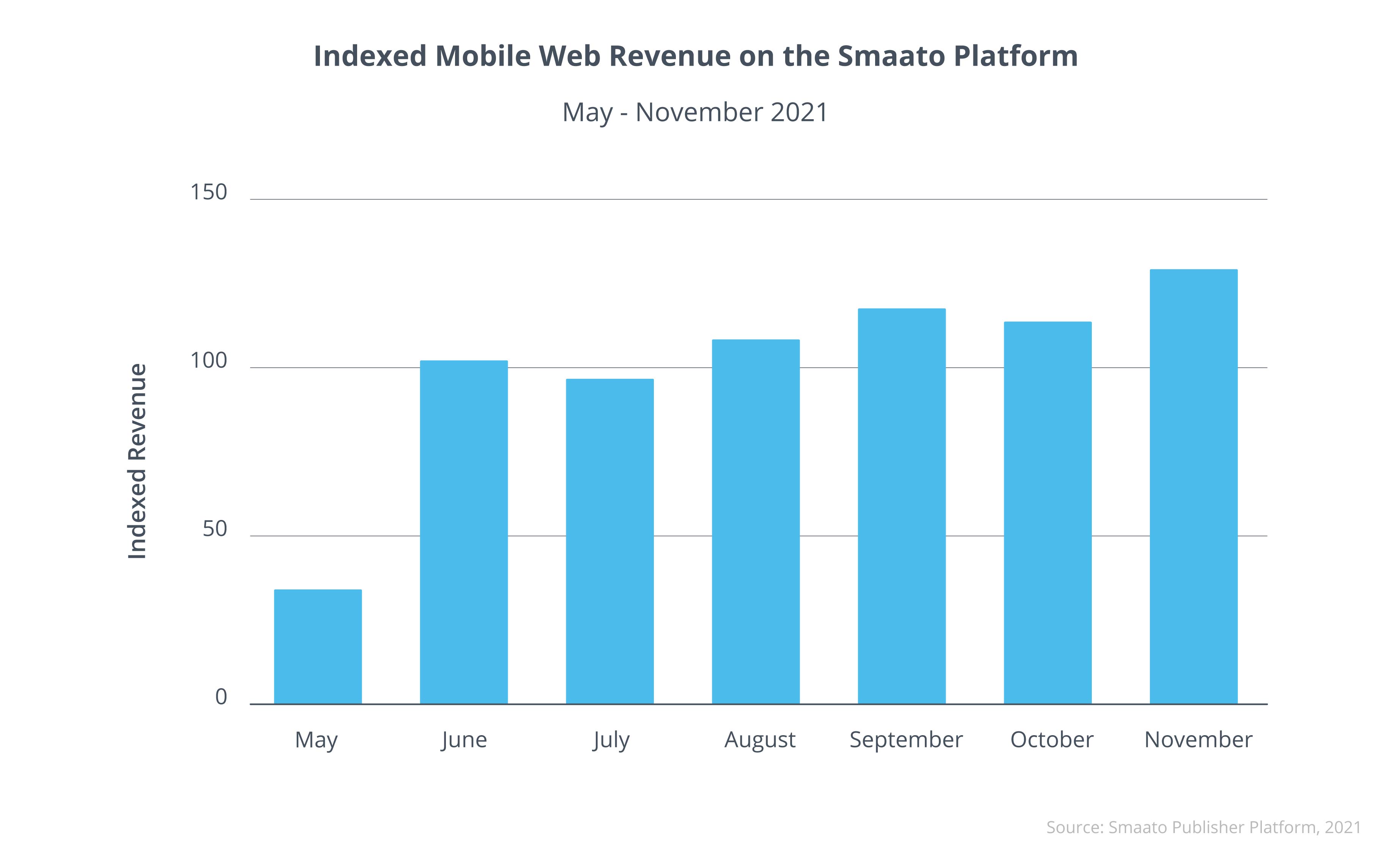
click to enlarge
What Are the Advantages to Mobile In-App Advertising?
Time spent “in app” continues to increase year-on-year (YOY). Users rely on apps for every facet of daily life, from working remotely, passing time with mobile games, streaming videos for entertainment, reading the news, listening to music or podcasts, shopping, staying connected with friends, improving productivity, and more. Users tend to also spend more time in app, in general, than on mobile web.
In the US, time spent in app continues to grow YOY, while time spent on mobile browsers holds steady at just under one hour daily.
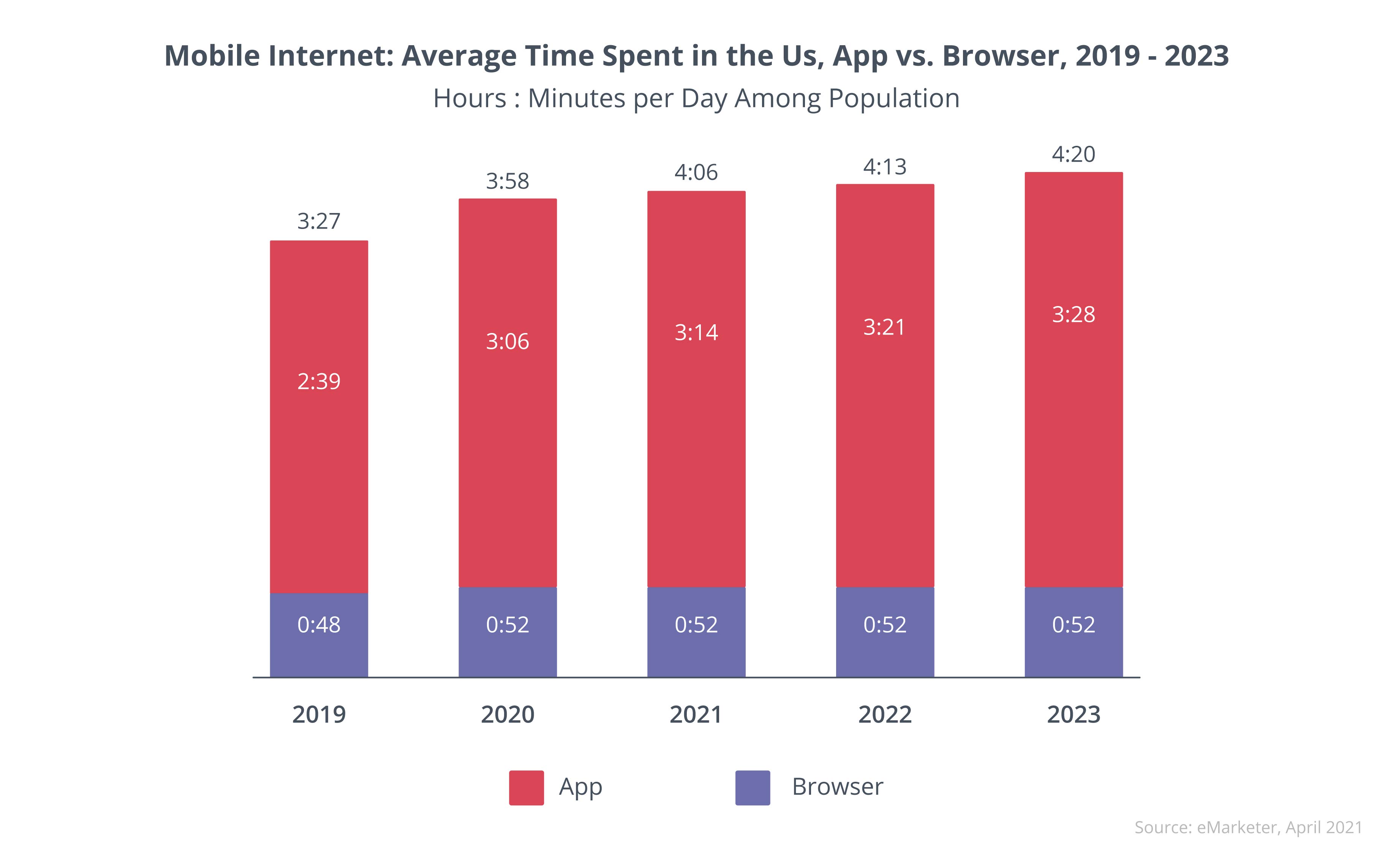
click to enlarge
So, one key advantage to in-app advertising is that marketers and advertisers have more hours of opportunity to reach users each day. With so much time spent in-app, advertisers will want to make sure their advertising strategy includes in-app ads.

In-app advertising also offers many engaging ad formats that can help advertisers make a big impression (no pun intended). Native ads are available in app, too, but other popular formats can further improve engagement.
For example, rewarded video ads are an extremely engaging and popular in-app format. Users opt in to watch an ad in order to receive in-app rewards. With gaming apps, rewarded videos can help players reach a hidden level, gain an extra life, or earn coins. Marketers only have to pay when a user watches an ad to completion, which makes rewarded video ads both cost effective and impactful. And, because users choose to engage with ad content in exchange for a reward, they tend to prefer this ad format, and rewarded ads can even improve brand perception.
Splash ads are full-screen interstitials that appear when a user first loads an app. Because it’s the first thing they see, when they’re paying complete attention to the app, these ads tend to have high engagement rates, and are viewed favorably, as they do not interrupt the users’ app experience.
Finally, another key advantage to advertising in-app is viewability. According to eMarketer, in-app viewability rate exceeds both mobile web and desktop viewability worldwide:
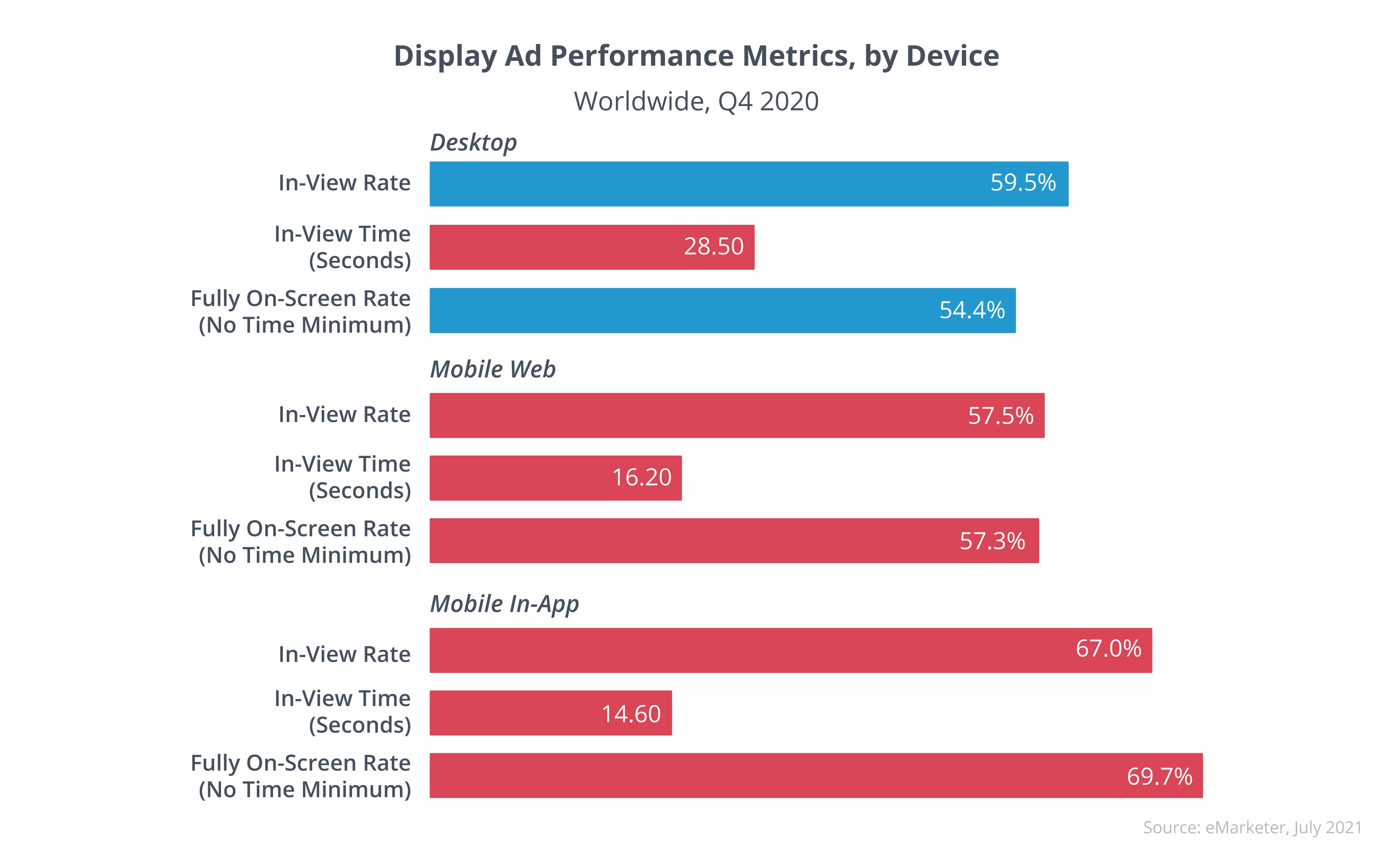
click to enlarge
Viewability may be attributed to prevalence of rewarded video ads, which users enjoy opting in to, and to the lack of ad blockers in mobile in-app environments. To learn more about rewarded video ads, check out our blog on the benefits of rewarded video as an ad format for gaming and beyond.
In Conclusion
Of course, marketers and advertisers don’t need to choose between mobile web or in-app advertising. A savvy advertising strategy will rely on a mix of both in-app advertisements and mobile-web ads.
Mobile web and mobile app ads can even work together. With deep linking, a mobile web ad can drive users to the App Store or Google Play to download an app, while contextual deep links can bring users directly to a page in-app. (Here’s a quick overview of the power of deep linking.)
Want to learn more about how Smaato can help you deliver outstanding user experiences on mobile devices?
Content from this blog originally appeared on Verve Group’s website. Verve Group and Smaato are both subsidiaries of Media & Games Invest (MGI).




